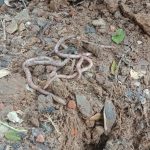In today’s world we see a lot of fakeness, artificiality, falsehood, synthesis, duplicacy making our lives miserable. Day after day this is on the increase. Looking at the causes of this misery it looks like we have moved far away from nature. The only way out is to get as much closer to nature as possible.Each and every individual on this globe has to think of ways and means to be green and it becomes necessary for us to look at solutions. The most of important of these is trying to adopt green practices as far as possible in our everyday life.
Why do we need Green Practices?
Human intervention into nature has brought about degradation of the environment.
Natural resources of the earth have become scarce as a result. There is a paucity for traditional sources of food like fruits, vegetables, cereals, pulses and poultry.
The soil has become laden with chemicals and toxins and water resources have been depleted.
An end is nearing for all natural and virgin sources of water like rivers, streams, lakes, wells and ponds.
The pollution of the land has caused pollution of the ground water sources. Globally we are faced with the problem of air pollution.
Though land and water pollution may appear local – it will be global in the long run.
Land pollution leads to pollution of ground water resources and some of these like rivers and streams ultimately reach the sea and merge in to the ocean.
Oceans are water bodies that are connected all over the globe. Hence local pollution will cause global effects.
Consequently looking at the pollution causing agents –as far as land pollution is concerned, it goes without saying that “all that is non-biological is a pollutant” without a doubt.
Any biological material when it reaches the soil undergoes decay and decomposition, breaks down becoming a part of the soil by the action of microbes present in the soil.
But non-biological materials cannot be degraded naturally . These may be degraded but will be converted to other compounds and may persist in the soil.
For example compounds like DDT, BHC, Styrofoam and high molecular weight synthetic compounds which take several years to be completely degraded.
Most of the chemical fertilisers and chemical pesticides used in agriculture are hazardous to soil, water, air, etc., and persistent use of these renders the lands fallow and unusable for agriculture.
Moreover use of plastics and disposable items has increased the load of non-degradable junk on this planet and has brought on environmental degradation. This has created loss of air and water quality making them unsuitable for human consumption.
If the same situation continues, soon the earth will become uninhabitable for humankind.
Apart from these reasons there are other causes for environmental degradation and loss of sanctity of the earth’s resources.
The two most important culprits that stand out prominently are industrialisation and urbanisation which are the necessary evils. Industrialisation and urbanisation are the luxuries that made mankind lose touch with the indigenous way of life.
Humans started squandering the gifts of nature without thinking about posterity and the responsibility of handing over to them the earth in a pristine state.
Over the years the deterioration of the earth’s environment grew by leaps and bounds and we will reach a point of no return if we do not take pertinent steps to check this degradation.
Because we have depleted all our natural wealth and have polluted our environment to the extent that our very existence on this planet has become doubtful.
With great difficulty though very late we have come to realise that restoration of biological resources and the natural beauty of the earth is the only way out for survival on this planet.
But this cannot be accomplished overnight. There are many organisations that have started work on this and the apex body for all these organisations is the IUCN (International Union for Conservation of Nature and Natural Resources) that has taken several steps in this direction.
Founded in 1948 the IUCN is an offshoot of the United Nations and keeps track of the natural resources and their depletion always looking at taking steps towards rejuvenation and restoration of the earth’s lost splendour and glory.











